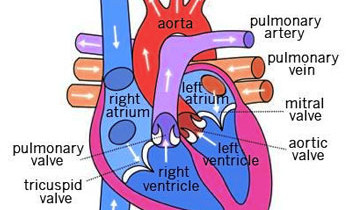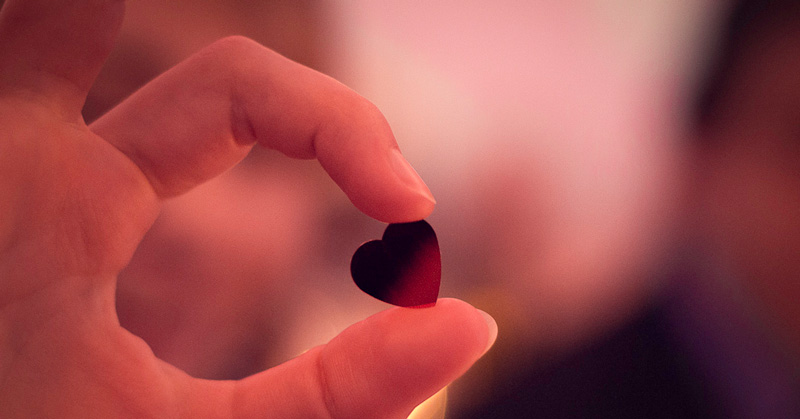
Written by Lisa Thompson, NTP
It’s February, one of my favorite months of the year! If you know me, you know that I love Valentines Day. In fact, I treat the whole of February as Valentines Month and I like to celebrate all things that emanate from the heart: love, compassion, kindness, whole-heartedness, life-giving and life-affirming energy and breath – for myself and all of humanity.
So I thought it would be appropriate to talk about the HEART and just how amazing it is, what can go wrong, and how we can keep it healthy and strong throughout our lives.
A little physiology to start off:
Approximately the size of a clenched fist, the heart is the muscular organ of the circulatory system that constantly pumps blood throughout the body, contracting and relaxing rhythmically throughout a lifetime.
 The heart has four separate compartments – the upper chambers on each side receive and collect blood coming into the heart. The upper chambers deliver blood to the lower chambers, which then pump the blood away from the heart through powerful, rhythmic contractions.
The heart has four separate compartments – the upper chambers on each side receive and collect blood coming into the heart. The upper chambers deliver blood to the lower chambers, which then pump the blood away from the heart through powerful, rhythmic contractions.
Two pumps in one, the right side of the heart receives oxygen-poor blood from the various regions of the body and delivers it to the lungs. In the lungs, oxygen is absorbed in the blood. The left side of the heart receives the oxygen-rich blood from the lungs and delivers it to the rest of the body.
Independent from the rest of the body, the heart has it own electrical conduction system (the SA node sends the electrical impulse that triggers each heartbeat). In a powerful wave-like action, the contraction and relaxation of the heart is obtained through a network of nerve muscle fibers.
So how does the heart get sick? Or, rather, what is atherosclerosis? We hear about it all the time but what is it?
Atherosclerosis is a disease of the arterial wall that leads to narrowing and obstruction of the artery. This narrowing is due to the development of plaques in the inner lining of the arterial wall and depending on which artery is affected, blood flow to the organ being fed by that artery will be compromised: the heart (resulting in CHD or Coronary Heart Disease-the most common cause of death today), brain (strokes), kidneys (high blood pressure and kidney failure), intestinal arteries (leading to severe abdominal pain and digestive problems), or peripheral vascular disease (of the extremities, muscles, ulcers, gangrene).
Conventional medicine does not know what causes atherosclerosis or how to cure it, but we have identified RISK FACTORS that contribute to its development: smoking, obesity, diabetes, stress, and an anxious and aggressive personality. There are about 200 and the list is still growing.
Before atherosclerosis can begin another condition needs to be in place – endothelial dysfunction.
The endothelium is a thin layer of cells that line the inside walls of all our blood vessels: arteries, veins and capillaries as well as our heart. It is a complex and magnificent thin layer of cells, an organ in itself that performs a myriad of functions, perhaps most importantly the ability to fight inflammation and repair the body.
When injured, the endothelium is unable to perform its many functions properly, like: regulating blood clotting and viscosity, muscle tone in the vascular system, hormonal function and regulating immune response, inflammation and repair. White blood cells now invade the injured endothelium and the inflammation begins as does the formation of plaques…. And the scene is set for atherosclerosis.
Anything harmful we allow into our bodies gets into our bloodstream where it can attack and injure the endothelium.
The list keeps getting longer – let’s have a look:
- Personal care products containing toxic chemicals proven to cause cancer are hidden in our shampoos, toothpaste, bubble bath, make-up, deodorant, perfume, shower gel, and other lotions and potions.
- Toxic domestic cleaning chemicals that we use to clean our homes enter our bloodstream through the skin and lungs where they injure our endothelium.
- Highly perfumed laundry and dishwashing detergents are very toxic and leave a residue on your clothes, bedding, towels, kitchen cutlery and utensils.
- Smokers and those affected by second-hand smoke are exposed to a plethora of toxic chemicals and free radicals that injure endothelium.
- Industrial pollution from factories, waste incinerators, airports, and big roads have a huge impact on mortality rates of those who live near them.
- Pesticides and other agricultural chemicals.
- Chlorine, fluoride, nitrates and other contaminants in our water causes endothelial dysfunction.
- Topically applied medicinal creams are absorbed almost immediately as opposed to medicines taken in pill form, where the drug will be filtered by the liver and most of it destroyed.
- Processed foods which are nutritionally empty and full of added chemicals, altered proteins and carbohydrates, damaging trans-fats and other man-made chemicals such as flavorings, preservatives, etc.
The list goes on and on, and everything on it contributes to Coronary Heart Disease, the number one cause of death in this country currently at 597,689, which is the latest figure from the Centers for Disease Control and Prevention.
Heart disease is preventable and we can start by making a few simple lifestyle changes:
- Find natural non-toxic alternatives for the personal care and cleaning products that you really need.
- Limit/eliminate exposure to second-hand smoke, and DON’T SMOKE.
- Eat organic and ecologically sustainable food (food grown in harmony with the natural environment).
- Make sure your drinking water is pure, and get a filter for the water you are bathing and cleaning with.
- Avoid processed foods.
Let’s show our hearts a little love by doing things that will nourish and heal these amazing and magnificent organs.
Let’s make this year a celebration of the heart and allow true health to glow and radiate.
With the help of my friends over at the Environmental Working Group and their awesome website SkinDeep, my personal goal this year is to replace the toxic personal care products that I use – make-up and hair products in particular – with those that are non-toxic to my body and especially my heart.
What are you going to do for YOUR heart?
From my heart to yours, Happy Valentines Day!
xol




Really informative Lisa! Thanks for sharing the EWG’s website for natural products as well.
Thanks for the post Lisa. I have replaced my personal care products and cleaning products with “clean” ones. I was concerned about the expense, but in reality, my beauty products cost much less. For the house I use mostly just vinegar and baking soda (along with some essential oil) and that is practically free! Plus I no longer feel ill after cleaning the bathroom from the bleach fumes.
Love your heart!